No magic stick: What Scotland can learn from the world's largest drug-consumption facility
It is almost shut-down time when we arrive at H17. The smoking booths are empty and no one is using the injecting suite across the way, but as staff lead us towards the recovery room along the corridor it is clear they have been recently in use. A man lies curled in the foetal position on a mattress outside the door, another sprawled across a brightly painted picnic bench in the centre of the room. Around them several others are dotted on matching makeshift beds, a woman coming round beside an unused foosball table in a visibly disorientated state. It is not a shocking sight exactly – this is the world’s largest drug-consumption room, after all. But still, it takes a moment to digest seeing so many people in such a state of drug-induced disarray.
It is just a few weeks since plans for a Glasgow safe-consumption room were effectively given the go-ahead and local MSP Paul Sweeney and I have come to the Vesterbro neighbourhood of Copenhagen, where drug users have congregated for more than 50 years, to find out what that will mean in reality.
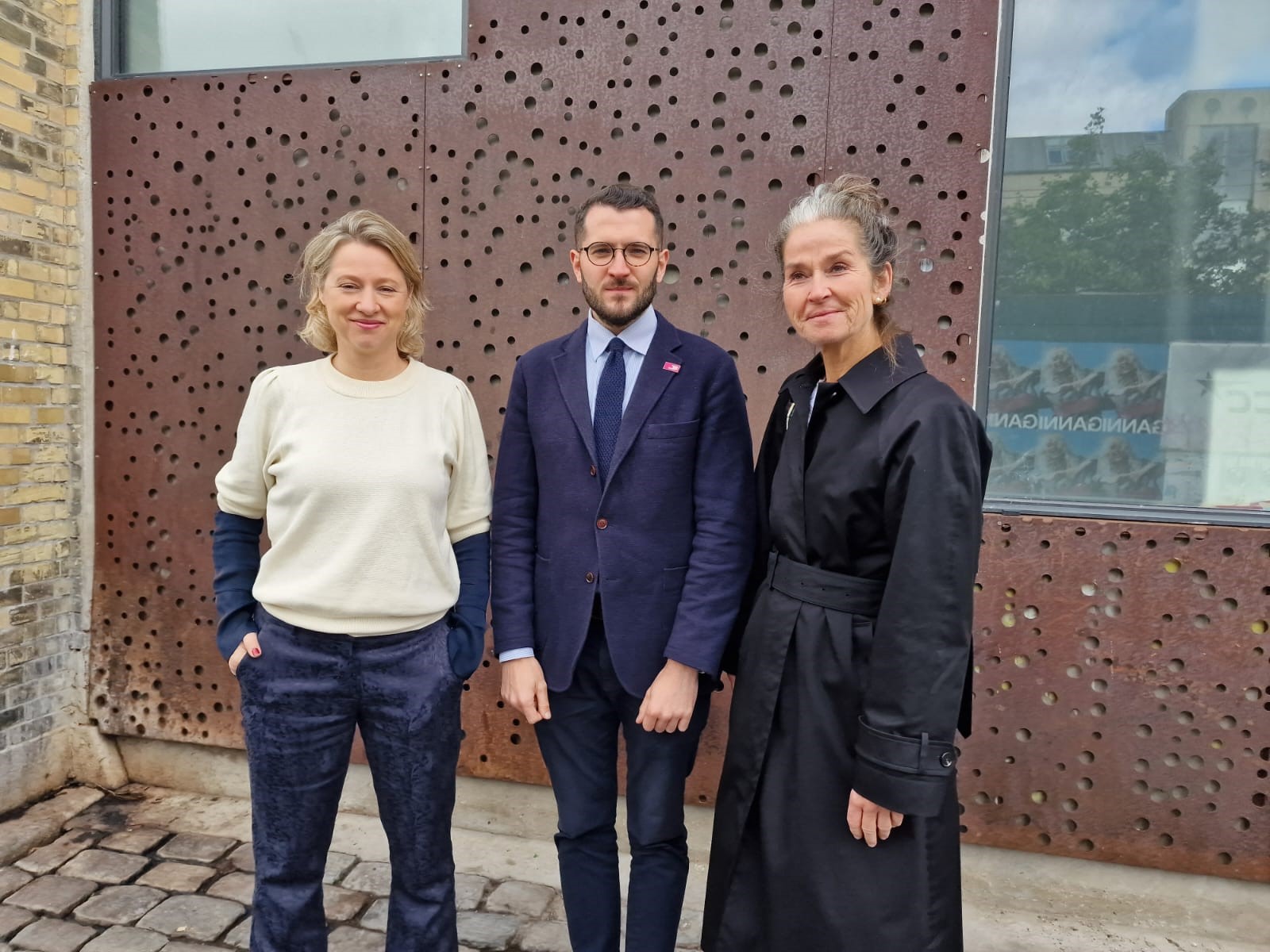 Glasgow MSP Paul Sweeney meets Copenhagen's Lord Mayor Sophie Hæstorp Andersen (left) and social mayor Karina Vestergård Madsen at H17
Glasgow MSP Paul Sweeney meets Copenhagen's Lord Mayor Sophie Hæstorp Andersen (left) and social mayor Karina Vestergård Madsen at H17
Housed in a converted slaughterhouse in the former meatpacking district, H17 has been offering a safe space in which to smoke and inject heroin and cocaine since 2016 and is the larger companion to the city’s original facility – Skyen – which has been operating from a site a few streets away for the past 11 years. H17 records between 500 and 600 intakes every day – often the same people will come multiple times a day – and, though there have been close to 1,300 overdoses in the facilities since 2012, not a single one of those has resulted in death. We’re here to meet the politician who made the rooms’ existence a reality, the opposition partner who is helping expand provision in the city, and the man who runs H17 on a day-to-day basis.
Sophie Hæstorp Andersen was previously chair of the Capital Region of Denmark – the administrative area that takes in 29 municipalities including the city of Copenhagen – and has been Lord Mayor of the city itself since January last year. Prior to that she was a member of Danish parliament the Folketing, and it was during her time as an opposition Social Democrat MP that she began pushing for changes to the country’s drug laws. Sitting next to social mayor Karina Vestergård Madsen, a Unity List socialist, across the huge table that fills the H17 meeting room, Andersen tells us how she became convinced that safe-consumption rooms were needed in the country.
“I’ve been in Vesterbro since the mid-nineties, when drug injection rooms were a big part of the political debate,” she says. “I got involved in the debate because when I moved here from the suburbs, I saw the open drug scene and it was terrifying. The policy then was to go after people with a very small amount of drugs – people using, as well as selling – but that led to a lot of dangers for people using drugs. I remember a woman called Heidi injecting drugs outside the Maria Church. She had a big, open wound that she was putting needles into, but she spoke about being willing to take a lot of risks because she was addicted to those drugs.”
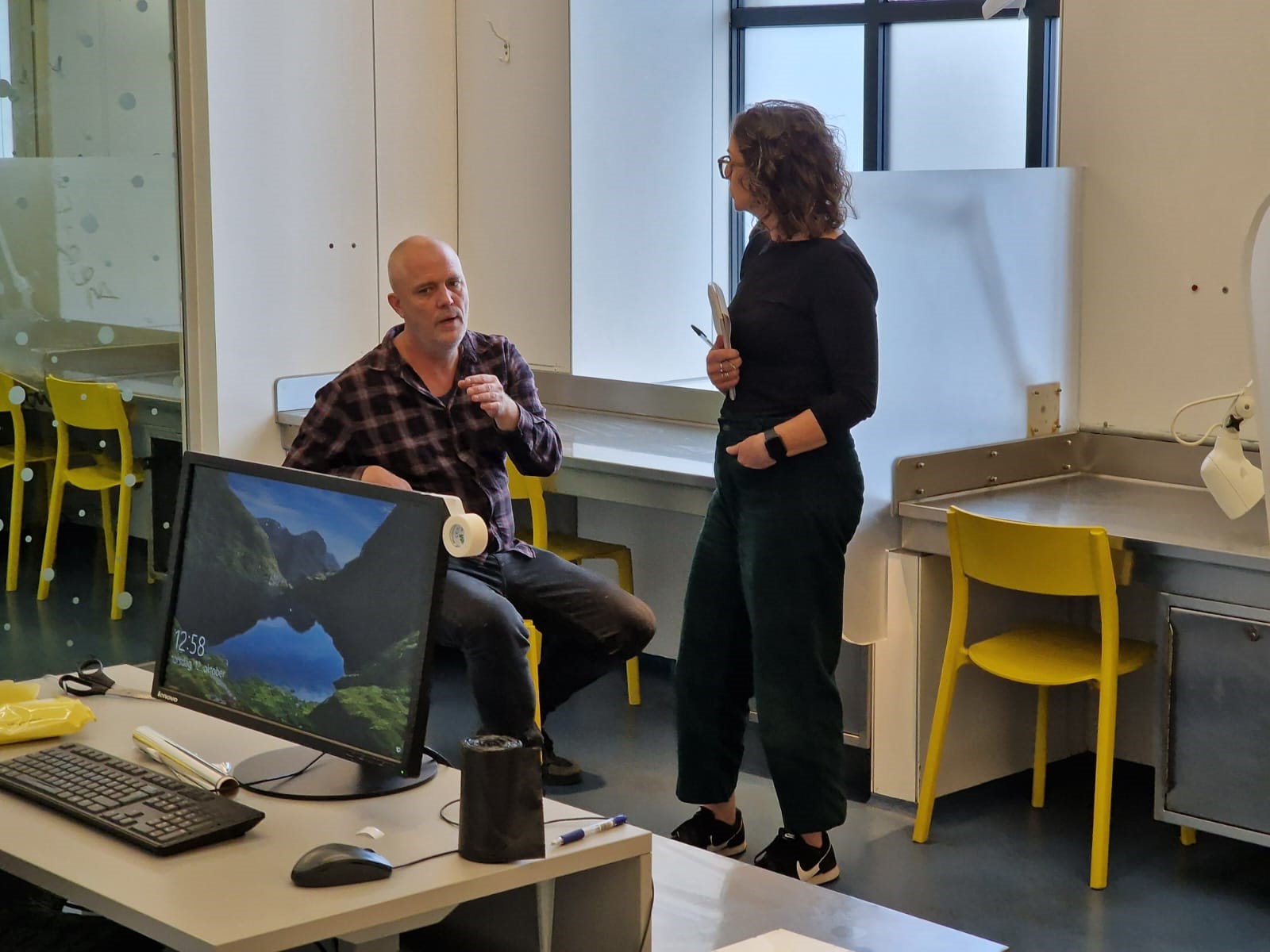 With Rasmus Christiansen inside the H17 injecting room
With Rasmus Christiansen inside the H17 injecting room
Andersen was elected in 2001, at which point the Social Democrats, who had been in government since the 1920s, found themselves in opposition for the first time in decades. Though as a party of government its policy had been to oppose safe-consumption rooms, in opposition it changed tack, thanks in large part to Andersen, who was the party’s health spokesperson at the time, convincing her colleagues that drug policy belonged in the health, not criminal, portfolio. By the time the Social Democrats came back into power in 2011 they were ready to change the law and, in 2012, passed a bill that made drug-consumption rooms legal while also decriminalising possession for personal use in or near such facilities.
The impact, says Madsen, who has been pushing for a further facility on the island neighbourhood of Amager as well as for a number of smaller, female-only sites across the city, has been huge. Things haven’t always run smoothly, though. Residents of Vesterbro, while supportive of finding a way to get drug users off the streets and out of their stairwells, didn’t initially want the facilities to be based near their homes and the original design of the rooms meant there was a high degree of conflict between users. Planning for an untested service also meant staffing took a while to get right, with retention proving a problem at first as staff got stressed and burnt out.
But since those issues have been addressed Skyen and H17 have been working as planned, with chaotic drug users corralled in a safe and sanitary place rather than scattered in parks and on the streets, and residents and municipal workers seeing a huge decrease in the number of needles littering the area. Crucially, Madsen says, there has been “not a single death when the drug use took place in a drug-consumption room”.
For Rasmus Christiansen, the straight-talking former social worker who has run H17 since it opened, this is key. The point of safe-consumption rooms is in the name, he says, with the facilities existing first and foremost to give vulnerable people living chaotic lives a safe place in which to consume and come round from hard drugs. They are not there to solve the problems that lead to addiction or to funnel the addicted into recovery, but to keep people off the streets and away from the harms they can experience there.
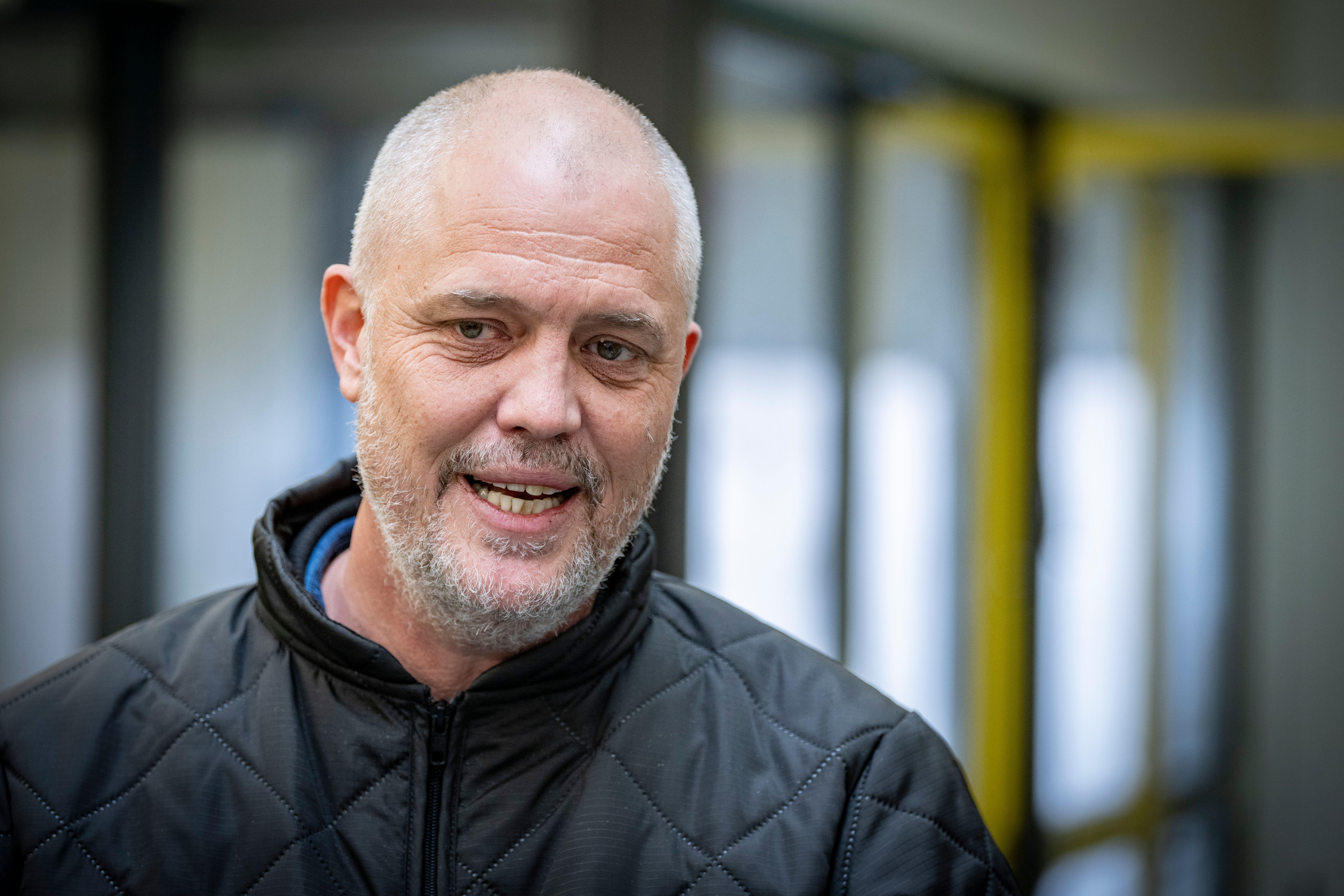 Rasmus Christiansen has run H17 since it opened in 2016; he says consumption rooms are not a "magic stick" for addressing addiction issues
Rasmus Christiansen has run H17 since it opened in 2016; he says consumption rooms are not a "magic stick" for addressing addiction issues
They are also about making sure the other people who use those streets – schoolchildren, people going to the shops or accessing their homes – do not have to witness or deal with the fallout of the chaos. On average H17 deals with two overdoses a week, overdoses that on the streets would likely prove fatal, and Christiansen tells the story of a local resident – a hospital doctor – who, before the consumption rooms were set up, spent his evenings watching a neighbouring park from his window, fearful that one of the people injecting drugs there would overdose and he would have to intervene.
“A drug-consumption room is not a magic stick,” Christiansen says. “You can’t say you have a drug-consumption room, and all your problems are solved. It’s not like that, you still have the problems.” Still, while no one running the service tries to push change onto any of its users – it would just drive them back onto the streets if they did – if anyone seeks change out they are offered immediate support.
“If a user comes to us to say, ‘I’m really tired of this now and want to get into treatment’ it’s not uncommon that we can make that contact between a user and a treatment centre within five minutes,” Christiansen says.
“That’s pretty good. My experience is that the number of users in this area is pretty steady. Some people are getting out of drug use, some people are dying from a long life on drugs, and there are new ones coming in. When I started in social work the agenda was that drug users should go into treatment – they should be free of drugs, get a job and be good taxpayers. That’s possible for some, but for many people here they have been to treatment maybe 30 times in their life. It’s not simple. I get asked if it’s too easy to be a drug user, but you wouldn’t wish this for your worst enemy.”
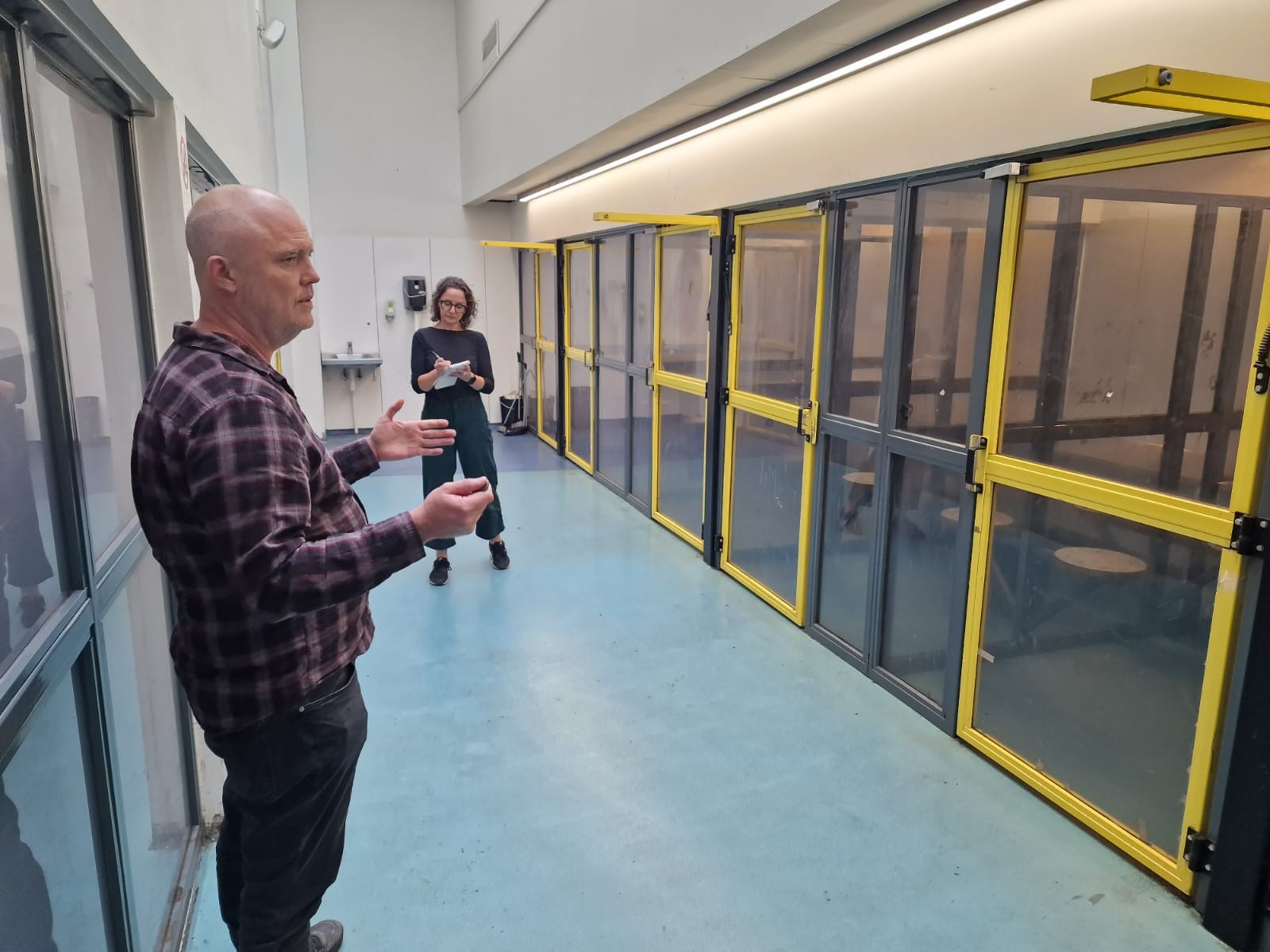 Inside the smoking room at H17
Inside the smoking room at H17
When we head outside to take photos a small group has gathered close to H17’s doors. They are shielded from the road by the fence that runs the length of the building, and some are injecting drugs while others caper and chatter, one man shouting out “præsident!” when he spots Andersen and Madsen.
Another breaks away to find out what we’re doing, switching from Danish into perfect English when he hears we are a journalist and a politician visiting from Scotland. Sanctioned consumption rooms are unnecessary, he says, because the rooms and apartments he and his friends spent 30 years injecting in were all safe-consumption spaces, everyone in them well versed in how to look out for their friends. All his friends are dead, though, he says, and while he repeats that he is “fucked” after three decades of using, he is here, alive, telling his story on the steps of a consumption room he is obviously well-known in.
The photo shoot over, we make our way back inside and everything is spick and span. The ventilation system has cleared the air in the smoking room, the blue mattresses have been wiped clean and piled against the wall, and the whole place smells of disinfectant. It is a nice space – spartan but clean, functional but inviting – and it is ready for the next 22-hour shift to begin.
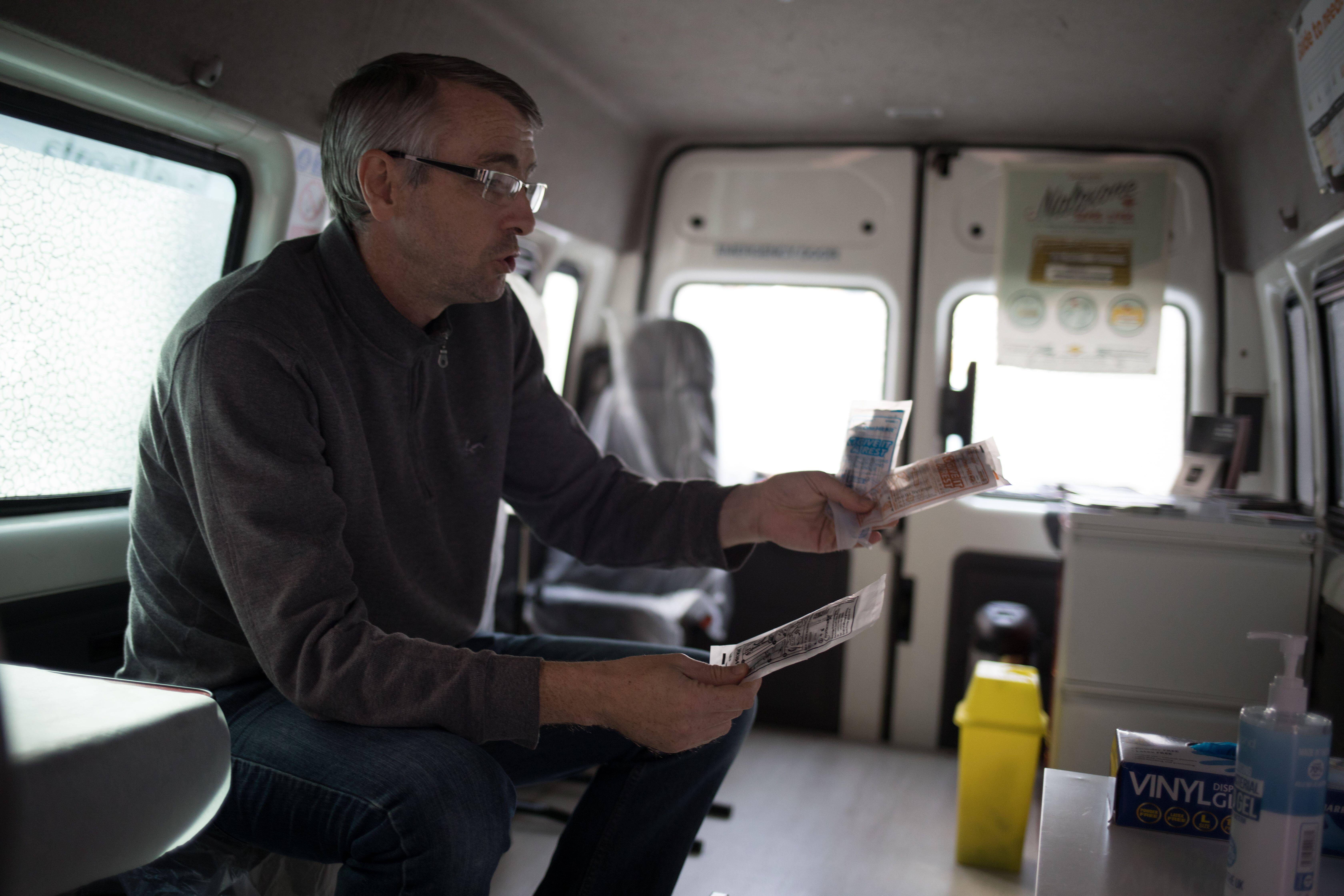 Campaigner Peter Krykant inside the unoffical consumption van he temporarily ran in Glasgow. Picture: Alamy
Campaigner Peter Krykant inside the unoffical consumption van he temporarily ran in Glasgow. Picture: Alamy
Sweeney first became interested in safe-consumption rooms when he helped campaigner Peter Krykant set up an unofficial facility in Glasgow city centre in late 2020. Based in a converted ambulance, the aim of the van was, Krykant wrote in The Guardian newspaper at the time, to stop users from “rushing injections in rat-infested alleyways, picking up infections and creating abscesses”.
Then, as now, there were around 500 people using drugs on the city’s streets. After benzodiazepines came on the scene in 2015, and cocaine replaced heroin as the injection drug of choice soon after, users had begun engaging in even riskier behaviours than before, sharing and reusing needles as the number of hits they required increased. By 2019 drug-related deaths in Scotland were soaring, reaching 1,264 that year, and though drug laws prevented safe-consumption rooms from being set up, Krykant and Sweeney wanted to show the difference such a space could make.
The van was short-lived, operating only until spring 2021, but the data collected by Krykant, Sweeney and their team of helpers show the situation in Glasgow to be strikingly similar to that in Copenhagen. In both cities the majority of users are injecting cocaine alone (60 per cent in Glasgow, 58 per cent per cent in Copenhagen) followed by a mixture of cocaine and heroin (around 20 per cent in both) then heroin on its own; in both cities men account for by far the largest proportion of users; and in both cities the number of people injecting drugs has remained broadly static for years. Yet, while the number of drug-related deaths in Scotland rose to a high of 1,339 in 2020 before falling back to 1,330 in 2021 and 1,051 last year, in Denmark it has hovered around the 100 mark for the past 10 years.
 Inside the Glasgow consumption van. Picture: Alamy
Inside the Glasgow consumption van. Picture: Alamy
Though a proof-of-concept paper written by a Queen’s University Belfast academic showed that the Glasgow van achieved what it set out to – that while Westminster’s Misuse of Drugs Act may outlaw possession under any circumstances “it is feasible for an overdose prevention service to operate successfully in the UK without being shut down by the police or with negative consequences for the community” – moves to launch an official H17-style facility have been repeatedly thwarted. Glasgow’s Health and Social Care Partnership first attempted to make headway in 2015, when an outbreak of HIV among injecting drug users led healthcare professionals and the city council to start pushing for dispensation to operate a sanitary consumption space.
That bid was blocked by Westminster’s refusal to change or devolve the legislation and by the fact that then Lord Advocate James Wolffe KC could not give assurances that those taking drugs into a consumption room would not be prosecuted for possession. In September this year, after being asked a different, more specific question than Wolffe had been, current Lord Advocate Dorothy Bain KC confirmed that she would take a different approach. Her commitment not to prosecute should certain conditions be met has given Police Scotland the certainty needed on how to act, and a Glasgow consumption room pilot has effectively been given the green light.
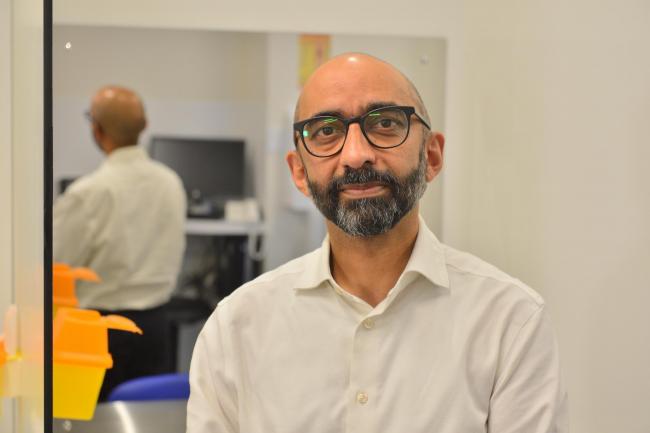 Dr Saket Priyadarshi, head of alcohol and drug recovery services in Glasgow, says the health response to addiction issues must operate on a continuum
Dr Saket Priyadarshi, head of alcohol and drug recovery services in Glasgow, says the health response to addiction issues must operate on a continuum
Dr Saket Priyadarshi, the softly spoken medical director for alcohol and drug recovery services across NHS Greater Glasgow and Clyde, is the man who will take charge of the facility. Priyadarshi became interested in problem drug use after leaving medical school with next to no training in the area. That was frustrating, he says, “because the burden is so huge, but it’s just not very well covered in undergraduate or postgraduate degrees". “I became a doctor and started working in west of Scotland hospitals and [for] the people coming through with problem drug use we had very little to offer,” he adds.
After switching to general practice 20 years ago Priyadarshi started offering specialised drug services and has been making the case for consumption rooms since that HIV outbreak in 2015. When I come to see him in his office in the Cessnock area of the city on a late October afternoon, he tells me why he believes they are such an important part of the drug-response mix.
“I strongly believe that there’s a continuum from keeping someone alive and reducing their physical and mental health harms all the way through to them, if they want, becoming drug free and abstinent and moving into deep established recovery,” he says. “It’s never a question of either or, one end or the other, it’s about having that whole continuum. There also has to be an understanding that, for some people with dependency problems and complex needs, their ability and the pace at which they can move on that journey isn’t what others expect, and it has to be about people’s choice. We aren’t pushing abstinence – we’re offering [a range of different] services.”
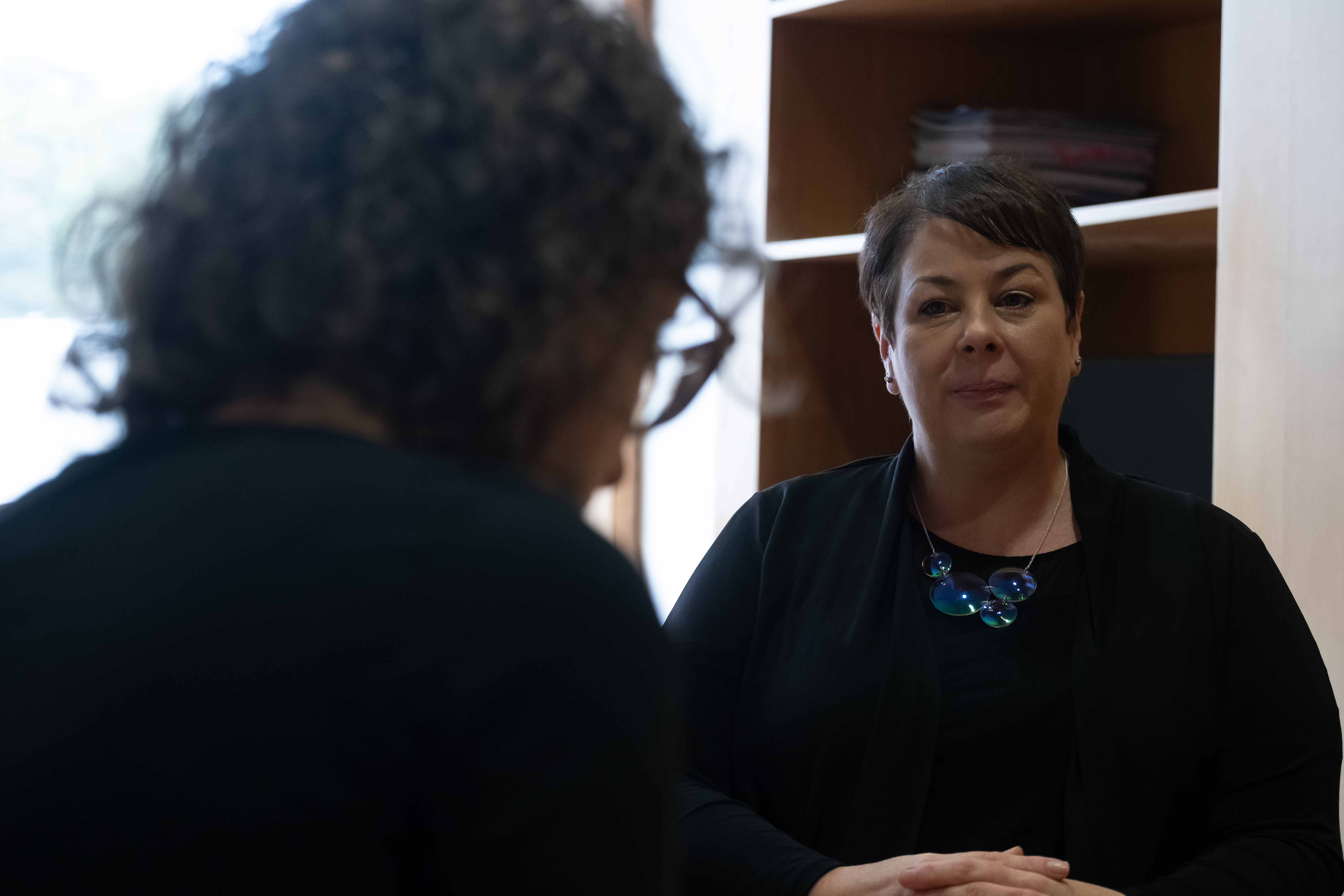 Drugs minister Elena Whitham says the Glasgow pilot is being set up on "shifting sands". Picture: David Anderson
Drugs minister Elena Whitham says the Glasgow pilot is being set up on "shifting sands". Picture: David Anderson
Though it’s within touching distance, the Glasgow consumption room is not yet a done deal. Priyadarshi notes that while Bain has said she’s willing to issue a prosecution statement, she’ll require local residents to be on board before she’ll sign it off. Consultation is ongoing at the moment and Priyadarshi is confident the outcome will be positive, not least because the experience in Copenhagen – where, as is the case in Glasgow at the moment, local residents had been afraid the streets near H17 would be over-run with drug dealers and addicts from other areas – has shown many concerns to be unfounded. Should that be the case, the facility, which will be situated next to the existing Enhanced Drug Treatment Service in Glasgow’s Gallowgate, will be up and running in the spring. Glasgow City Council is poised to pay for modifications to the building, which will only include an injecting room due to laws around smoking in public places. The Scottish Government, meanwhile, has committed to footing the facility’s £2.3m annual running costs.
Yet, even if the site does open in the spring, and even if the pilot is deemed to be a success, it doesn’t necessarily follow that consumption rooms will be rolled out across the country. The UK Government has said it won’t interfere in the pilot, but as long as the Misuse of Drugs Act remains in place, drug possession will remain a crime. All it would take is a change in Westminster government or for a lord advocate with a different prosecutorial approach to come in for the scheme to be rendered null and void.
Drugs minister Elena Whitham tells me that concerns her, that unless the law is reformed or devolved the Glasgow safe-consumption facility will always be operating on “shifting sands”. That’s why it’s so important to get this one up and running, she says, because “once it’s established it’ll be difficult to roll back from”.
Still, despite these headwinds, no one really believes either issue will blow the pilot off course. In Denmark, safe-consumption rooms are seen as a proven harm-reduction concept. The expectation is that they soon will be in Scotland, too.
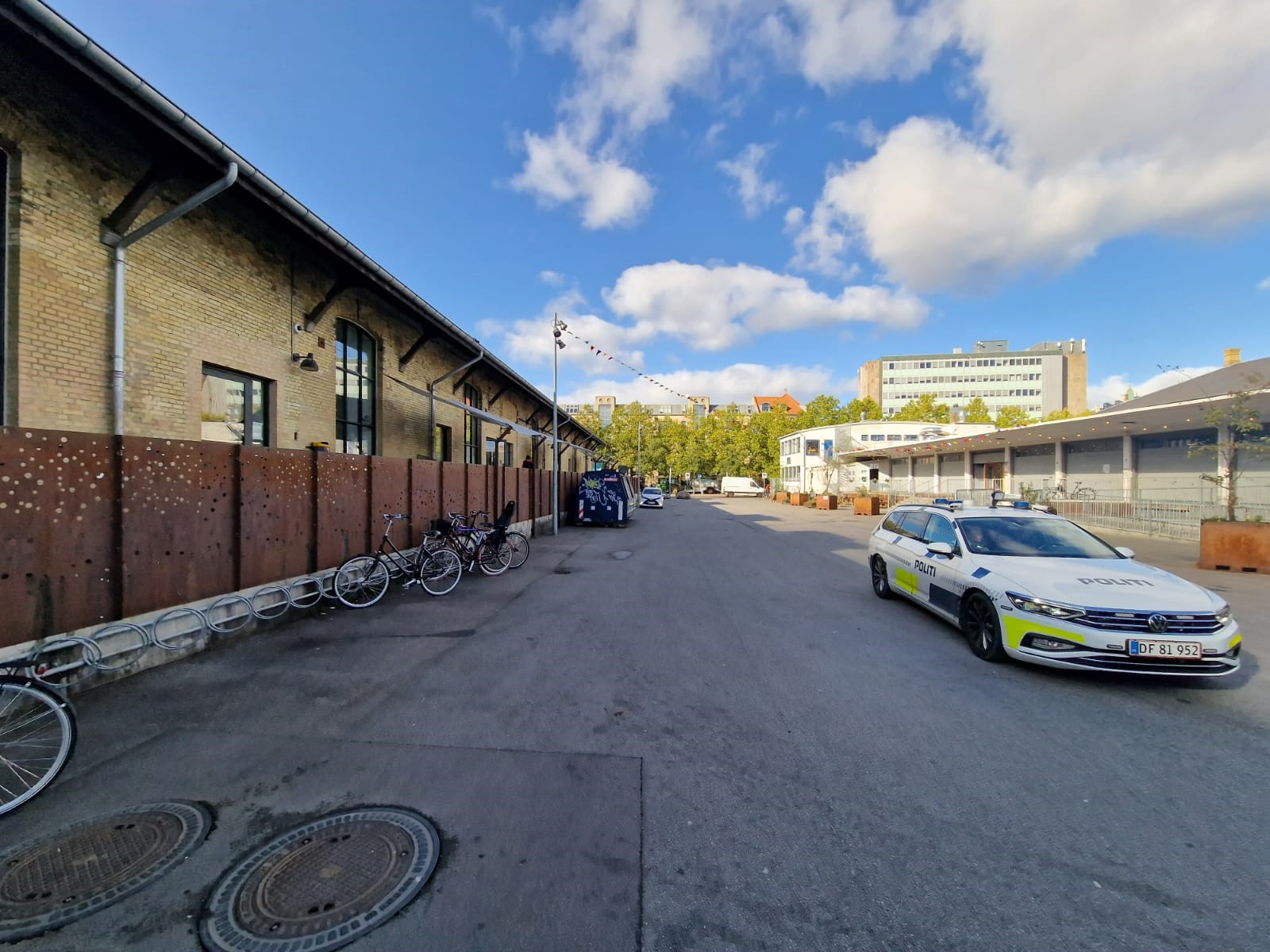 H17 (left) with Copenhagen Central Police Station in the background
H17 (left) with Copenhagen Central Police Station in the background
Back in Copenhagen our meeting at H17 is over and Sweeney and I head out to explore Vesterbro. Described by the Visit Copenhagen website as a “popular neighbourhood” that is “equally cool and authentic” with “old-school gritty vibes”, it is remarkably similar to the area where the Glasgow safe-consumption room will be. Both are populated by run-down industrial buildings that rub shoulders with revamped and repurposed ones, and, while Calton and the Gallowgate cater for the hipster crowd in places such as Barras Art and Design and The Gate, Vesterbro lures them in with the likes of Paté Paté and Warpigs Brewpub. Sweeney and I pick out a trendy burger bar to have lunch in and, as we wait for the food to arrive, we discuss everything we’ve seen and heard as Neil Young and Depeche Mode blare out of the sound system. It has, Sweeney says, been a reassuring day.
“It’s quite striking the similarities between here and Glasgow – the geographic position in the city, the scale of it, the numbers involved in terms of gender split and the type of drugs taken, the similarities with the people who were coming along to the unofficial pilot in Glasgow. They’ve been on a very similar journey to where we are but they did it many years ago. It was very reassuring and motivating to see it in operation. It’s a very simple solution and part of me is left wondering what all the fuss in Scotland has been about. It’s reassured and enthused me, especially the fact that it’s now uncontroversial here.”
With time to kill before out flight home we stroll through Vesterbro and on to Indre By, the administrative district of the city. It’s a beautiful autumn afternoon, the streets are thronging with cyclists and the pavements are scattered with people enjoying the sunshine outside the many cafes that line the way.
Later, as we head back towards the train station, we pass H17. If we didn’t know it already, we’d have no clue that it was there. There are no dealers hanging around, no drugs paraphernalia scattered on the ground, and no anti-social activity spilling over into the local area. H17 is just another repurposed building blending into its environment. What we do know is that the people inside that building are safe, that the addictions that control their lives are not going to kill them today. It’s not a magic stick, but it’s enough.
Holyrood Newsletters
Holyrood provides comprehensive coverage of Scottish politics, offering award-winning reporting and analysis: Subscribe